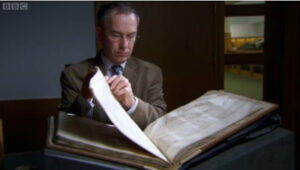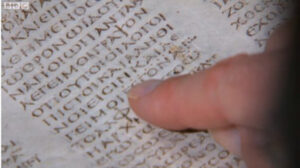A recent BBC program “The Beauty of Books: Ancient Bibles” concluded that the church deliberately introduced thousands of changes into the New Testament for theological reasons. Did the church engage in a plot to alter its theology early in its history, as some conspiracy theorists allege?

“Similar statements have been made before in the media and we believe that they are highly misleading,” says Dr. David Instone-Brewer, a research fellow at Tyndale House, a Bible study center for scholars located near Cambridge University.

The documentary concluded that the phrase ‘Son of God’ in Mark 1.1 was missing from the original Gospel and that Mark believed that Jesus became divine at his baptism. But Instone-Brewer disagrees.
“If Mark had wanted to teach this, then Jesus’ baptismal saying would be: ‘You are now my Son or ‘You have become my Son.’ The debate continues about whether it was added or omitted, but it is unlikely that the variant is an attempt to change the theological message of the whole gospel.”
There is an innocent explanation for the various changes. “Although there are some corrections, where the original is erased or overwritten, this is relatively rare. Most of the 23,000 aren’t ‘corrections’ because they leave the original text fully visible, putting a dot under or over letters instead of deleting them, and writing above letters so you can clearly see the earlier text, as the screenshots from the program show clearly. This demonstrates that they didn’t want to expunge bad theology, but they wanted to record that other manuscripts were often subtly different. The vast majority of these changes are very minor — alternate spellings or slight grammatical variations which make no difference to the meaning of the text.”
Instone-Brewer added: “The thousands of manuscripts later than Sinaiticus have numerous tiny differences due to inexpert copying in the early church. If a class of students all copied out a short book by hand, they would all make mistakes, but the teacher might still be able to reconstruct the original from all the copies. Textual scholars of the New Testament do this same work today.”
Tyndale House contains excellent photographic facsimiles of Codex Sinaiticus, which are closely studied next to the original. Scholars at Tyndale are able to study the almost identical lettering of different scribes by enlarging the text on computers.
“The main conclusion of this documentary was that the scribes of Codex Sinaiticus added alterations because of their theological agenda. In fact, the only theological agenda that can be demonstrated is a high reverence for the text and a desire to record differences in manuscripts so that the original can be preserved.”




Please let me know if there is a book that I can buy regarding all this information.
La Tasha,
You could contact Tyndale House through their website:
http://www.tyndale.cam.ac.uk/
Blessings,
Mark Ellis
Comments are closed.